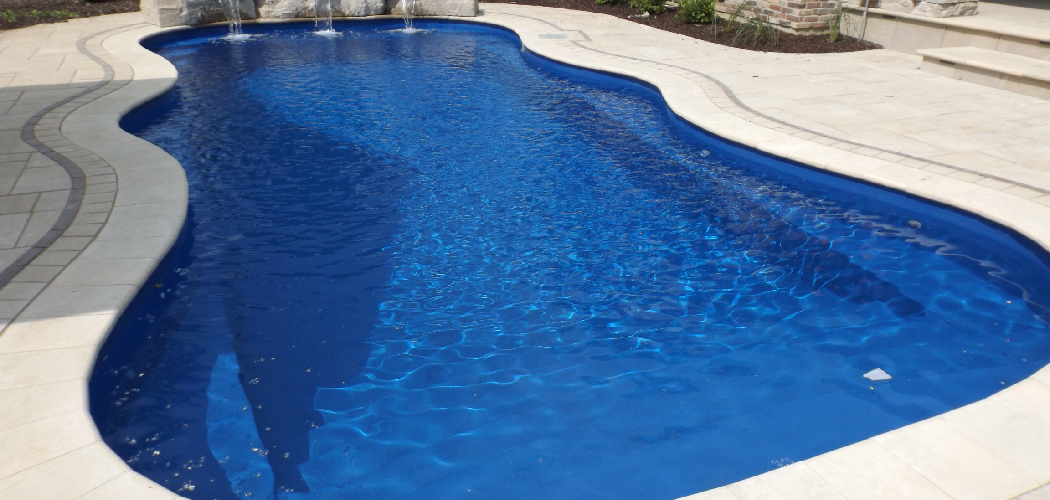Installing your own fiberglass pool is a project that can be both fulfilling and cost-effective, allowing you to create a refreshing oasis right in your backyard. Unlike traditional concrete pools, fiberglass pools come pre-fabricated and require a different approach to installation. While the process can be challenging, it’s certainly achievable with careful planning, the right tools, and a commitment to quality.
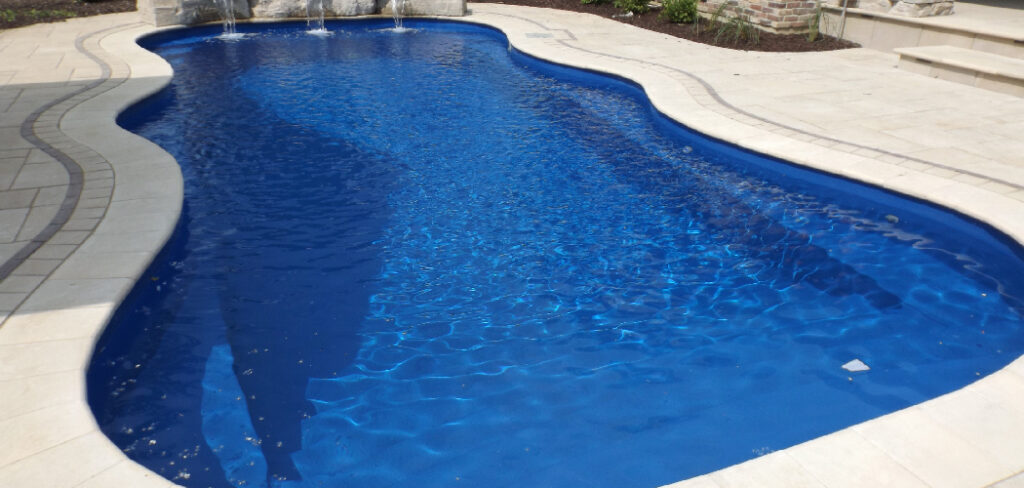
In this article, we will explore how to install your own fiberglass pool, from choosing the right location and preparing the site to handling the delicate task of placing the pool shell, connecting plumbing, and completing finishing touches. By gaining an understanding of the techniques and challenges associated with this DIY project, you can turn your vision of a fiberglass pool into a reality, enhancing your home with a low-maintenance, durable, and aesthetically pleasing aquatic feature.
Benefits of Installing a Fiberglass Pool
When it comes to swimming pools, fiberglass pools are a popular choice among homeowners. This type of pool is made from a special kind of plastic reinforced with fiberglass layers, making it incredibly durable and long-lasting. In this section, we will explore some of the benefits that come with installing a fiberglass pool in your backyard.
Easy and Quick Installation
One of the main advantages of installing a fiberglass pool is that it is relatively easy and quick to install compared to other types of pools. This is because the pool shell is pre-fabricated in a factory and then transported to your backyard for installation.
Low Maintenance
Another benefit of fiberglass pools is that they require very little maintenance. The smooth and non-porous surface of the pool makes it easy to clean, preventing algae growth and reducing the need for harsh chemicals.
Durable and Long-Lasting
As mentioned earlier, fiberglass pools are made from a special type of plastic that is reinforced with layers of fiberglass. This makes them incredibly strong and resistant to wear and tear. Fiberglass pools can last for decades without needing any major repairs or renovations, making them a wise investment for homeowners.
10 Methods How to Install Your Own Fiberglass Pool
1. Gather Necessary Materials and Tools
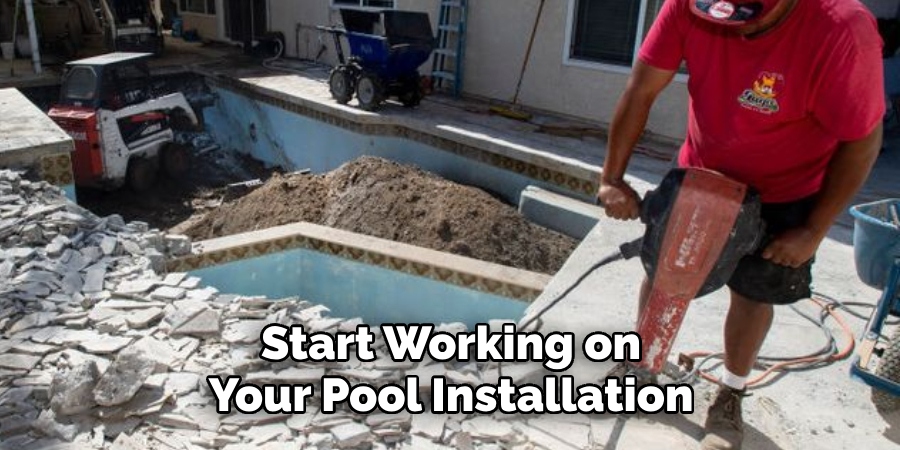
Before you can begin installing your own fiberglass pool, it is important to gather all the materials and tools that you will need for the job. This includes things like a ladder, a shovel, a level, safety goggles, gloves, a trowel, a drill, and other items. Make sure that you have all of these items before you start working on your pool installation project.
2. Mark Out the Pool Area
Once you have all of your materials and tools gathered together, the next step is to mark out the area where your pool will be located. You should use stakes or flags to mark off the exact location and size of your pool so that you know exactly where it will be installed.
3. Dig Out the Pool Area
The next step in installing your own fiberglass pool is to dig out the area where it will be located. You should dig down at least two feet below ground level in order to ensure that your pool is properly supported when it is filled with water.
4. Level Out The Base
After digging out the area for your pool, it is important to make sure that the base is leveled before proceeding any further with installation. You can use a level or spirit level to check if everything is even before moving forward with installation.
5. Lay Down Sand and Gravel
Once you have ensured that everything is leveled properly, you can then lay down sand and gravel in order to create a stable base for your fiberglass pool to rest on top of. Make sure that this layer of sand and gravel covers every inch of the base of your pool before moving on to the next step in the installation process.
6. Place The Fiberglass Shell On Top Of The Base
Now it’s time to place your fiberglass shell onto the base that was created earlier in this process. Carefully lower it into place while making sure not to damage any part of it during this process, as this could affect its structural integrity when filled with water later on in the installation process.
7. Secure The Fiberglass Shell In Place
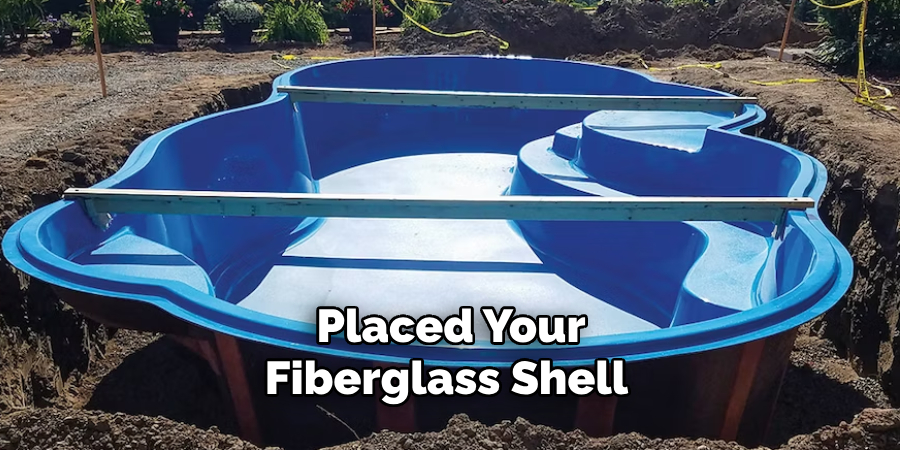
Once you have placed your fiberglass shell onto its base, it’s important to secure it into place using screws or bolts so that it does not move around while being filled with water later on in the installation process. Make sure that each screw or bolt is securely tightened into place before continuing to the next step in the installation process.
8. Fill With Water
After securing your fiberglass shell in place, now comes the time to fill up with water! Make sure not to fill too quickly, as this could cause damage or leaks due to sudden pressure changes within the structure of the shell itself. Slowly fill up until the desired amount has been reached, then let stand for 24 hours, so any minor adjustments needed can be made after the settling period has passed.
9. Install Accessories And Equipment
Now comes the time for installing accessories such as ladders, diving boards, slides, etc. Take extra care when doing so, as these items are often heavier than other parts associated with swimming pools. Once all accessories are installed, move onto the final step.
10. Test For Leaks
Now comes the time for testing whether there are any leaks present within the structure itself. This can be done by filling up the entire structure again, but this time adding dye, which will help detect any areas that may be leaking. If no leaks are present, congratulations! Your new fiberglass swimming pool is ready for use!
Things to Consider When Installing a Fiberglass Pool
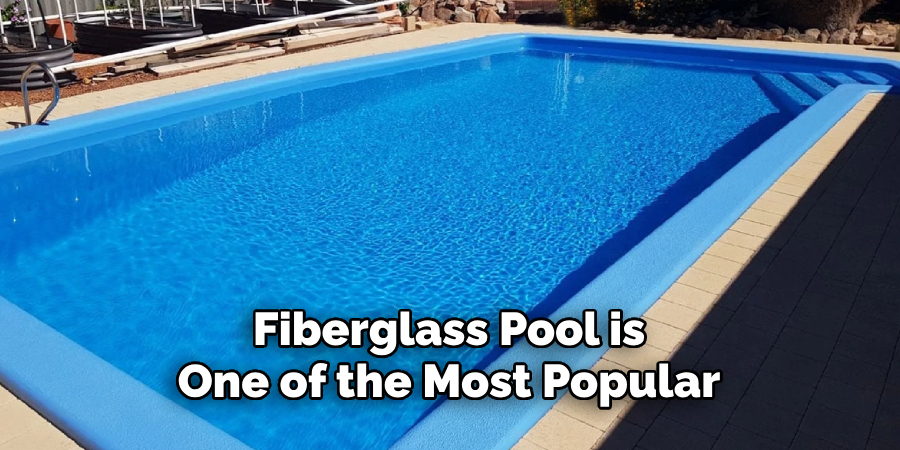
A fiberglass pool is one of the most popular choices for homeowners who want to add a swimming pool to their backyard. It offers many benefits, including low maintenance and easy installation. However, before you jump into installing your own fiberglass pool, there are some important things that you should consider.
Proper Planning and Permits
Before starting any installation, you need to ensure that you have all the required permits from your local authorities. It is also essential to plan out the location and size of your pool carefully. Consider factors such as sun exposure, landscaping, and other structures in your backyard.
Proper Ground Preparation
The installation process for a fiberglass pool starts with preparing the ground where the pool will be placed. This includes leveling and compacting the ground, ensuring that there are no sharp objects or rocks that could damage the pool shell. It is also important to have proper drainage in place to prevent water from accumulating under the pool.
Access for Equipment and Materials
Fiberglass pools come pre-fabricated and will need to be delivered to your home. Make sure that you have proper access for the delivery truck and crane to maneuver the pool into your backyard. You also need to have enough space to store all the necessary equipment and materials needed for installation.
Common Mistakes to Avoid While Installing a Fiberglass Pool
Fiberglass pools have become very popular in recent years. This is mainly because they are durable, easy to maintain, and can be installed quickly compared to other types of pools. However, despite their many advantages, there are still some common mistakes that people make when installing a fiberglass pool.
Not Considering Proper Placement
One of the biggest mistakes people make when installing a fiberglass pool is not considering proper placement. It’s essential to choose an area that has good drainage and is away from any trees or roots that could cause damage to the pool. Additionally, you should also consider the amount of sunlight and shade in the chosen area as this can affect the water temperature and maintenance requirements.
Not Preparing the Ground Properly
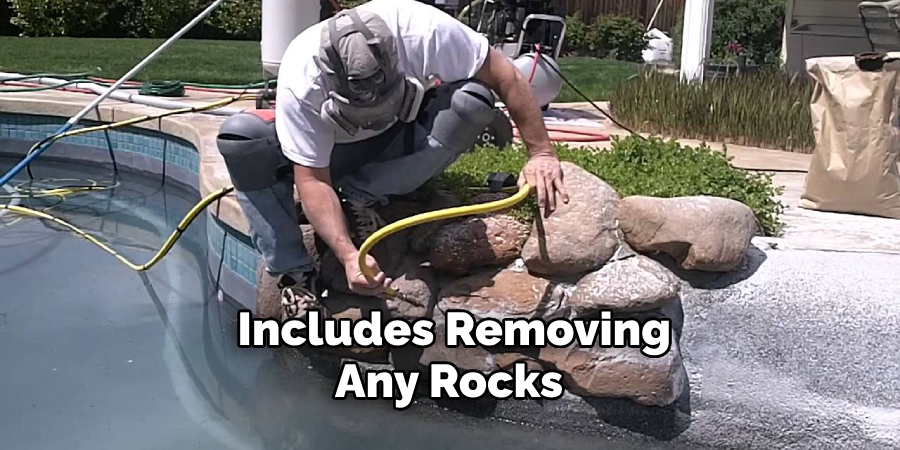
Proper preparation of the ground is crucial for a successful fiberglass pool installation. This includes removing any rocks, debris, or roots from the area where the pool will be placed. If the ground is not prepared properly, it can lead to uneven settling of the pool, which can cause cracks and other structural issues.
Skipping the Pool Permits
Many homeowners make the mistake of skipping the pool permit process, thinking it will save them time and money. However, this is a costly mistake that can result in heavy fines and even legal action in some cases. It’s essential to obtain the necessary permits before installing a fiberglass pool to ensure that it meets all safety and building codes.
Conclusion
Installing your own fiberglass pool is no small endeavor, but if you’re up for the challenge it could be the best decision you’ve ever made. With the right guidance, tools, and materials you can make your dream of a personal pool a reality. The best part is that after taking all these steps to install your own fiberglass pool, you’ll be able to enjoy it with family and friends for years to come! Make sure to remember all seven steps we discussed in this post so that you can get off on the right foot.
From getting the ideal placement to following building safety code requirements, there are plenty of little details that need attention. But overall, relying on professionals throughout this process will ensure that your dream becomes a reality without any hiccups along the way. So what are you waiting for? Start planning out how to install your own fiberglass pool today for a summer full of rest and relaxation!
About
Outdoor Fixes is a distinguished figure in the world of Diy design, with a decade of expertise creating innovative and sustainable Diy solutions.
His professional focus lies in merging traditional craftsmanship with modern manufacturing techniques,
fostering designs that are both practical and environmentally conscious. As the author of diy,
outdoorfixes delves into the art and science of outdoorfixes-making, inspiring artisans and industry professionals alike.
Education RMIT University
(Melbourne, Australia) Associate Degree in Design (Outdoor Fixes) Focus on sustainable design, industry-driven projects,
and practical craftsmanship. Gained hands-on experience with traditional and digital manufacturing tools, such as CAD and CNC software.
Nottingham Trent University
(United Kingdom) Bachelor’s in outdoorfixes.com and Product Design (Honors) Specialized in product design with a focus on blending creativity with production
techniques. Participated in industry projects, working with companies like John Lewis and Vitsoe to gain real-world insights.
Publications and Impact
In diy, Outdoor Fixes his insights on indoor design processes, materials, and strategies for efficient production.
His writing bridges the gap between artisan knowledge and modern industry needs, making it a must-read for both budding designers and seasoned professionals.

